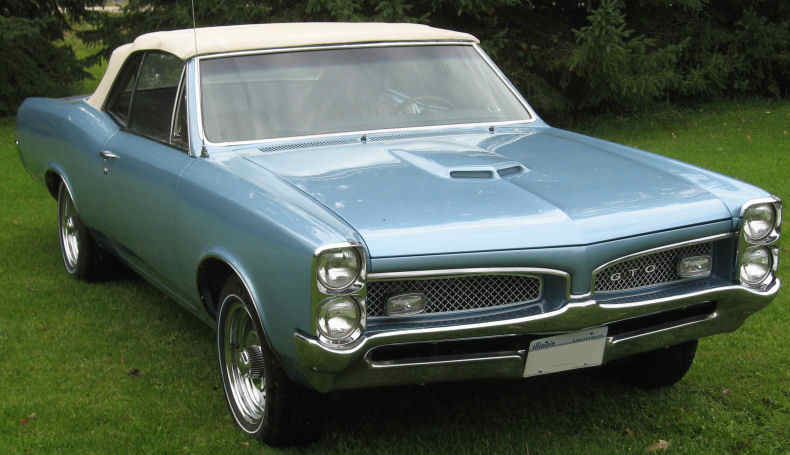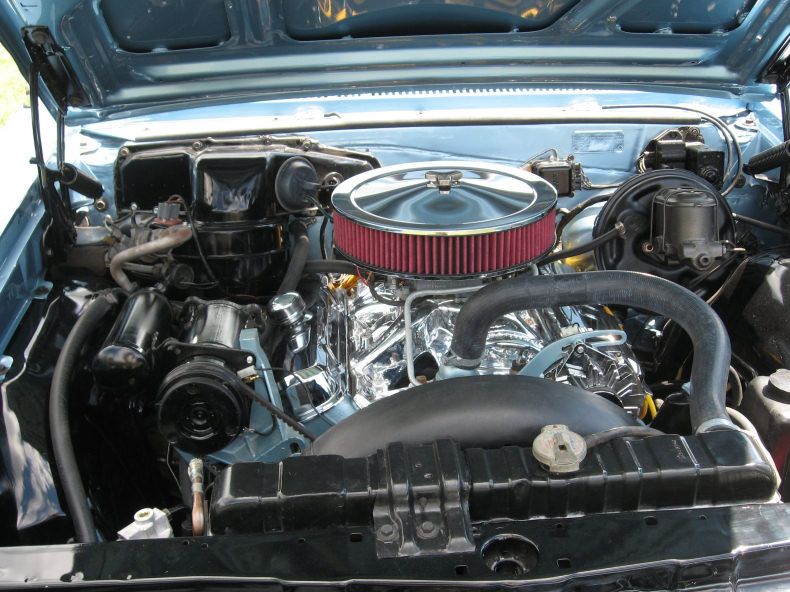











Restoration by Fellion Auto Restorations llc
From 1962 until 1981, the Pontiac Division of General Motors featured the compact Pontiac LeMans as the top-line version of the Pontiac Tempest. LeMans was a model name that was applied to both compact and intermediate-sized vehicles before being replaced by the Bonneville in 1982. Showcasing much more luxurious trimmings and a sportier design than the Tempest, the LeMans stayed in place as the top-line version as the Tempest was upsized and restyled from a compact to an intermediate-size vehicle. During this update, the Pontiac LeMans continued to keep the same 215 in³ six-cylinder and 326 in³ V8s that was found in the standard Tempest. Available with a new performance car package with the designation GTO (Grand Turismo Omologato), the LeMans featured this option priced at under $300 at the start of the 1964 model year.
Considered by many to be the first true muscle car, as other manufacturers were concentrating on their full-size lines, Pontiac viewed the potential for marketing at a budget price a big block engine in an intermediate frame. This GTO option came with a larger 389 in³ V8 from the full-sized Pontiac line that put out an amazing 325 or 348 hp. The GTO featured a three-speed floor shift manual transmission with Hurst shifter, red-line Tiger Paw tires, GTO nameplates, and heavy-duty suspension. Following 32,000 sales as the end of the first year, the GTO was considered a great success compared to the predicted 5,000 units sold. It was this image and success that helped to establish the Tempest and LeMans models in following years, as it sold in amazing number and created the hottest performance machine yet. The GTO also is responsible for promoting Pontiac to third place in industry sales.
For 1966, the GTO became its own separate model though it continued to keep the same basic body as the LeMans and Tempest models. All of the Pontiac intermediates received a more swooping style that featured tunnel-back rooflines on a two door hardtop and pillared coupes. The GTO remained a big-engine muscle vehicle, while the Tempest and LeMans models received a new SOHC 230 ³ six-cylinder engine as the base engine. Optional features included a Sprint package that included a four-barrel version of the 230 in³ OH six that had a higher compression ratio and hotter cam. This engine also featured a floor-mounted three-speed transmission with Hurst shifter, body striping and suspension kit. For those that would rather have a V8 engine, the base two-barrel 326 in³ V8 was rated at 250 hp and was considered to be the most popular Tempest/LeMans engine. Another featured option was a 285 hp four-barrel 326 HO V8 with a higher compression ratio, dual exhausts and high performance cam. During the mid-to-late 1960s, the Sprint-optioned LeMans and Tempest models weren't the most popular, as they were being outsold by the large-engine GTO though the V8 power of the LeMans and Tempest models was a more preferred option during this time.
In 1969, both the Sprint and the SOHC six-cylinder engine was discontinued and the base Chevrolet-built 250 in³ OHV six-cylinder engine became the base engine used from 1970 to 1976 Pontiac intermediates. In the beginning, a pillared coupe and convertible were featured by LeMans for 62 and 63, but in 64 a hardtop coupe was added, along with a four-door pillared sedan the following year. The pillared sedan was eventually replaced by a four-door hardtop in 66 and a four-door Safari wagon in 68. Upgrades for these years included deluxe steeling wheels, full wheel covers, courtesy lighting and carpeted lower door panels. The LeMans name-plate was downgraded to the mid-line sub-series that were previously known as the Tempest Custom in 1970. This sub-series included a both two and four-door pillared sedan.
LeMans Sport, available in the same three body styles which included a four-door hardtop sedan, two-door hardtop coupe and convertible was the rename of the previous top-shelf LeMans series. The larger engines that had previously been reserved for GTO's were now made available on the lesser Tempest/LeMans models and included a 400 in³ V8 rated at 265 hp with either a two-barrel carburetor or a 330 hp option with a four-barrel carburetor and dual exhausts. Pontiac promoted the LeMans nameplate to a full-series status to now identify all of its current intermediate models (which still included the GTO) and the Tempest name was entirely retired. Previously known as the Tempest, the Pontiac T-37 was now placed at the bottom of the line. All Pontiac intermediates were made LeMans models for 1972. The GTO was downgraded from a sub series and reverted back to an option package on the LeMans and LeMans Sport, and was priced at only $353.88. The low-priced T-37 was replaced by a LeMans pillared coupe. Featuring a more plush interior, and available in both hardtop sedan and coupe models, the Luxury LeMans was now the top-line intermediate model. The Sport edition was made available as either a two-door hardtop or convertible that showcased Strato bucket seats and interior fittings from the Luxury LeMans.
The LeMans and other GM intermediates grew much larger in size from 1973 to 1977 due to evolutionary changes from federally-mandated 5 mph crash bumpers that now added weight and length. The new intermediate lineup now included the base LeMans, LeMans Sport Coupe, Luxury LeMans, the Euro-style Grand Am and the GTO. All body styles were based on GM's Colonnade hardtop design for both coupes and sedans and included center pillars that enhanced rollover safety standards but eliminated true hardtop designs. After the 1972 model year, no convertibles were made available on the market. The LeMans along with the other GM mid-sized vehicles were produced considerable downsized in 1978, as they lost between 600 and 800 lbs in the process due to GM's corporate downsizing program. This program was put into effect following the Arab Oil Embargo induced crises that caused engines to be downsized and reduce the size and weight of the vehicles. Engine options were also reduced to a standard Buick-built 231 in³ V6 or an optional 301 in³ V8 for 1978, Pontiac-built engine. These were compared to a larger 350,400 and 455 in³ V8s that was used in earlier years. Pontiac's mid-sized lineup included the base model LeMans, Grand LeMans and a Grand Am from 1978 to 1980. The revived Grand Am was much more suited in both size and concept as a Euro-style sport sedan when compared to the larger 73 and 75 models and was not a tremendous seller as ether a sedan or coupe. The Grand Am nameplate was discontinued for a few years following 1980, and was eventually revived in 85 as a new compact vehicle. 1981 was the last year for the mid-sized LeMans. Only the base and Grand LeMans models were offered at first during the year, before a new LJ trim level was added and placed between the Grand and base models. The following year, the LeMans nameplate was dropped and rebadged as the Bonneville. Reduced to one trim line in both four-door and Safari wagon models, the LeMans (soon to be Bonneville) did not offer a Pontiac engine as the division now discontinued V8 production following 1981 to concentrate on Iron Duke four-cylinder engines for GM's smaller vehicles. The lineup for 1981 now consisted of the Olds 350 diesel, the Buick V6 or the Chevrolet 305 V8. Following 1983, the mid-sized Bonneville wagon was dropped while the sedan stayed on the line until 1986. The Bonneville nameplate was shifted to a larger front-wheel drive full-sized sedan in 87 and now shared its basic platform with both LeSabre and Oldsmobile Delta 88.
source: conceptcarz .com